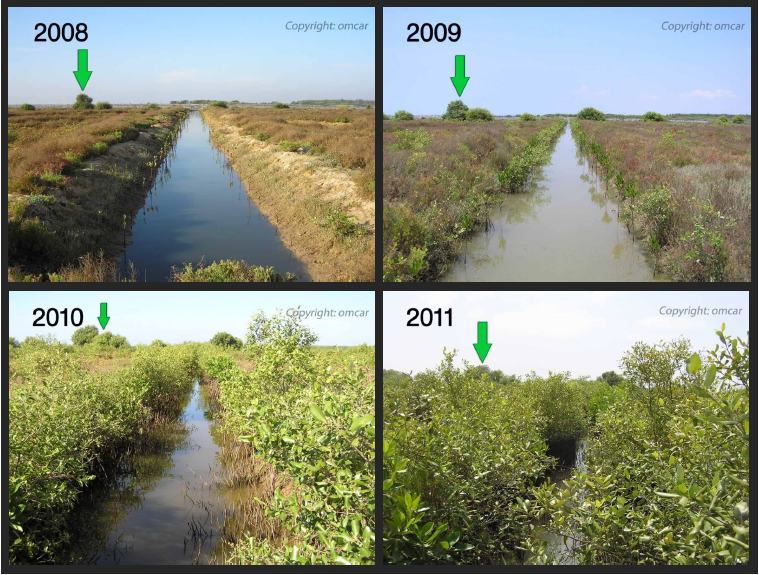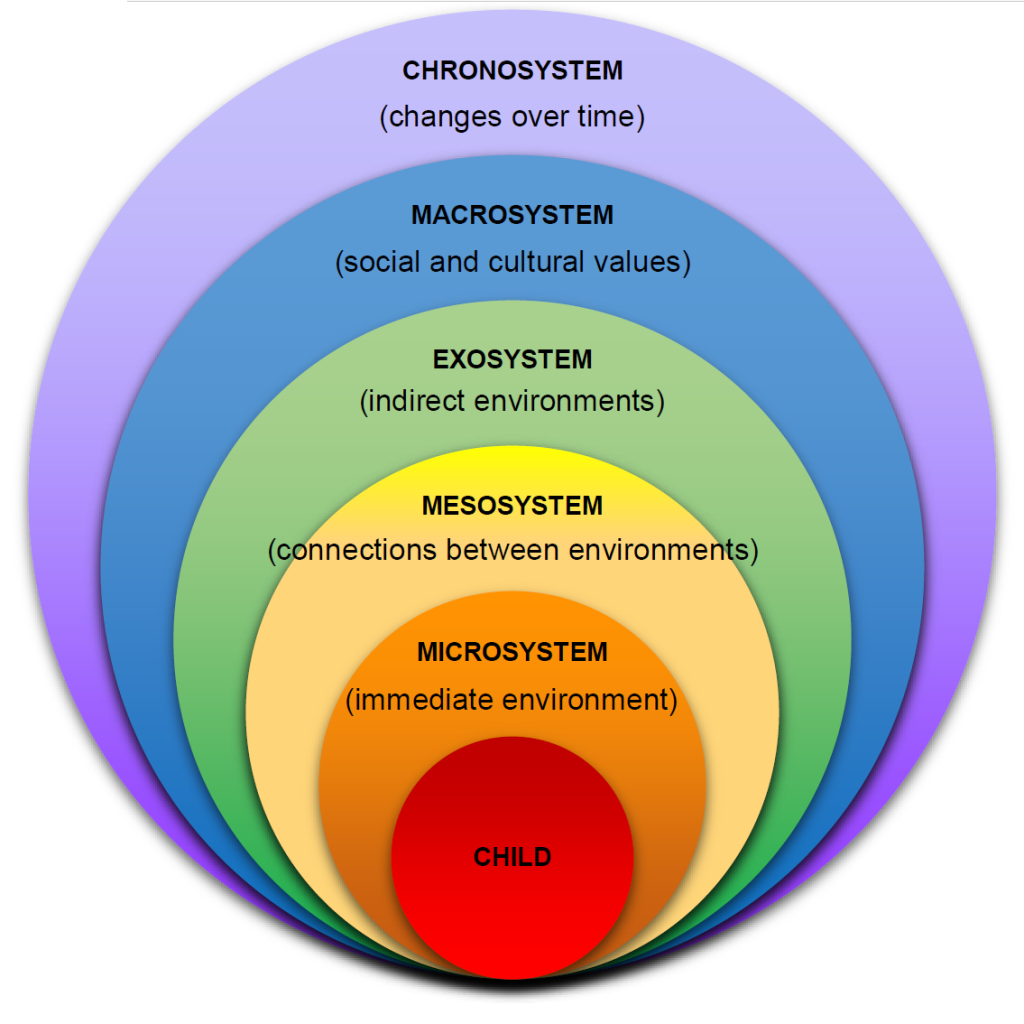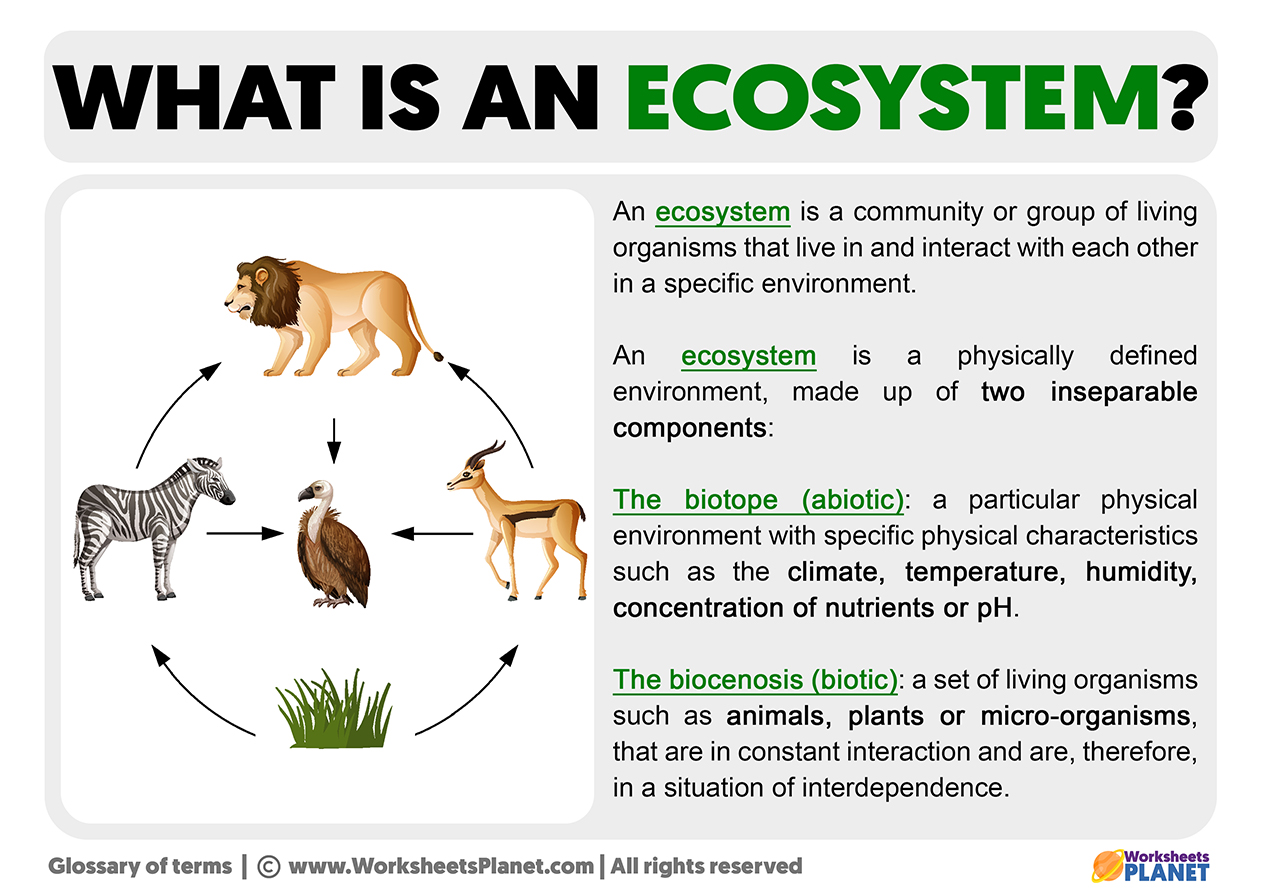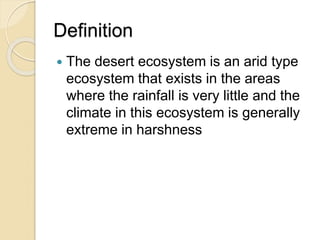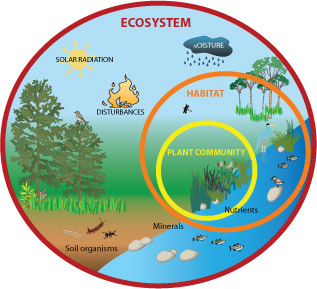Topic define terrestrial ecosystem: Explore the essence of terrestrial ecosystems, the intricate networks of life on land that sustain biodiversity and underpin global ecological balance.
Table of Content
- What is the definition of a terrestrial ecosystem?
- Definition and Importance of Terrestrial Ecosystems
- Types of Terrestrial Ecosystems
- Components of Terrestrial Ecosystems: Biotic and Abiotic
- Energy Flow and Nutrient Cycling
- YOUTUBE: What is Ecosystem? Different Types of Ecosystem Environmental Science EVS Letstute
- Role of Terrestrial Ecosystems in Climate Regulation
- Human Impacts on Terrestrial Ecosystems
- Conservation and Restoration Efforts
- Future Challenges and Research Directions
What is the definition of a terrestrial ecosystem?
A terrestrial ecosystem is a land-based community of organisms and the interactions of biotic and abiotic components in a given area.
Terrestrial ecosystems are found on land and encompass a wide variety of habitats, ranging from deserts to forests to grasslands.
- These ecosystems are defined by the presence of soil, which serves as the foundation for plant growth and provides a habitat for a diverse array of organisms.
- Plants play a crucial role in terrestrial ecosystems by converting sunlight into energy through photosynthesis, forming the base of the food chain.
- Animals, including insects, birds, mammals, and reptiles, interact with plants and other organisms in the ecosystem through feeding relationships, competition for resources, and mutualistic partnerships.
- Abiotic factors such as temperature, precipitation, soil composition, and topography also play a significant role in shaping terrestrial ecosystems and influencing the distribution of plants and animals.
READ MORE:
Definition and Importance of Terrestrial Ecosystems
Terrestrial ecosystems are dynamic communities of plants, animals, and microorganisms, together with the nonliving components of their environment, interacting as a functional unit on land. These ecosystems vary greatly over the earth and include forests, grasslands, deserts, and tundra, each supporting distinct biotic communities tailored to their environments.
The importance of terrestrial ecosystems cannot be overstated. They play critical roles in the carbon cycle, help regulate the earth"s climate, and are vital for the water cycle, filtering and purifying the water we depend on. Moreover, they provide habitat for the majority of the world"s biodiversity, offer agricultural grounds for food production, and are a source for valuable raw materials and medicinal plants. Furthermore, terrestrial ecosystems are integral to human well-being, offering recreational, aesthetic, and cultural benefits that enrich our lives.
- Carbon Sequestration: Terrestrial ecosystems capture CO2, helping to mitigate climate change.
- Biodiversity: Serve as home to the majority of the planet"s species, maintaining ecological balance.
- Soil Formation and Protection: Play a key role in soil development and prevent soil erosion.
- Water Regulation: Influence the water cycle and contribute to water purification.
- Economic Benefits: Provide raw materials, food, and medicines, supporting economies worldwide.
Protecting these ecosystems is essential for sustaining life on earth, combating climate change, and preserving the natural heritage for future generations.

Types of Terrestrial Ecosystems
Terrestrial ecosystems, which cover about 30% of the Earth"s surface, vary widely in their characteristics and the life forms they support. These ecosystems are categorized based on climate, soil type, and vegetation. Understanding these types helps in the conservation and study of biodiversity and ecological processes.
- Forests: Including tropical rainforests, temperate forests, and boreal forests, these ecosystems are characterized by high levels of rainfall and dense tree cover.
- Grasslands: Comprising tropical savannas, temperate grasslands, and steppe ecosystems, grasslands are known for their grasses, herbs, and few trees.
- Deserts: Defined by their extreme dryness, deserts can be hot or cold, and support specially adapted plant and animal life.
- Tundra: Found in the Arctic and Antarctic regions, tundra ecosystems have permafrost, low temperatures, and a short growing season, supporting mosses, lichens, and few shrubs.
- Mountain Ecosystems: These are characterized by a wide range of climates and biotic communities, varying with altitude.
Each of these ecosystems plays a crucial role in our planet"s biodiversity, climate regulation, and provides various services essential for human survival and well-being. Protecting these diverse terrestrial ecosystems is vital for maintaining ecological balance and ensuring the sustainability of our planet.
Components of Terrestrial Ecosystems: Biotic and Abiotic
Terrestrial ecosystems are complex networks that include both living (biotic) and non-living (abiotic) components interacting in a delicate balance. These components are essential for the functioning of the ecosystem, influencing its structure, dynamics, and productivity.
Biotic Components
- Producers: Mainly plants, they convert solar energy into chemical energy through photosynthesis, forming the base of the food web.
- Consumers: Animals that rely on other organisms for food, divided into herbivores, carnivores, omnivores, and decomposers.
- Decomposers: Fungi and bacteria that break down dead organic matter, recycling nutrients back into the ecosystem.
Abiotic Components
- Soil: The medium for plant growth, composed of minerals, organic matter, water, and air, influencing vegetation type and productivity.
- Water: Essential for life, influencing soil moisture, plant growth, and animal habitats.
- Climate: Determines the overall environment of the ecosystem, including temperature, precipitation, and sunlight, shaping the types of life that can thrive.
- Air: Provides essential gases like oxygen for respiration and carbon dioxide for photosynthesis.
- Light: Solar energy is crucial for photosynthesis, driving the primary production in ecosystems.
The interaction between biotic and abiotic components defines the unique characteristics and functions of each terrestrial ecosystem, supporting a diversity of life forms and ecological processes. Understanding these interactions is key to managing and conserving terrestrial ecosystems effectively.
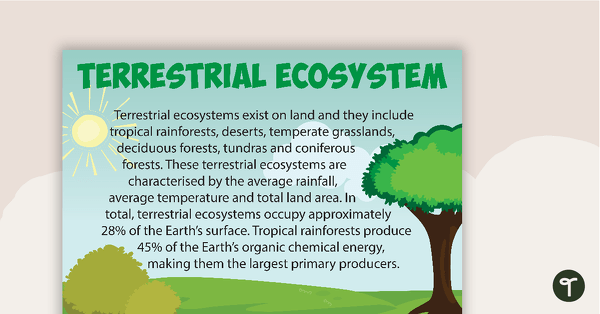
Energy Flow and Nutrient Cycling
Energy flow and nutrient cycling are fundamental processes that drive the functioning of terrestrial ecosystems. These interconnected cycles support life, maintain ecological balance, and ensure the sustainability of ecosystems.
Energy Flow
Energy in terrestrial ecosystems flows through a food chain or web, starting from the sun and moving through producers to consumers and then to decomposers. This flow of energy is crucial for the survival of ecosystem inhabitants and dictates the structure of the ecosystem.
- Solar Energy: Captured by producers (plants) through photosynthesis.
- Consumers: Use the energy stored in plants or other animals they eat.
- Decomposers: Release energy from waste and dead organisms, making it available again for producers.
Nutrient Cycling
Nutrient cycling involves the recycling of nutrients necessary for life, such as carbon, nitrogen, and phosphorus, through different components of the ecosystem.
- Carbon Cycle: Moves carbon between the atmosphere, living organisms, and the earth, crucial for regulating the earth"s climate.
- Nitrogen Cycle: Involves the conversion of nitrogen into forms usable by plants, essential for DNA and proteins.
- Phosphorus Cycle: Recycles phosphorus through the soil, water, and living organisms, vital for cell membranes and energy transfer.
Understanding these processes is key to appreciating the complexity of terrestrial ecosystems and the importance of conserving these vital natural systems for future generations.
What is Ecosystem? Different Types of Ecosystem Environmental Science EVS Letstute
Explore the fascinating world of ecosystems in our video, showcasing the unique balance of flora and fauna in different habitats. Witness the beauty of nature at its finest and learn about the interconnectedness of all living things.
Types of an Ecosystem Terrestrial Ecosystem Aquatic Ecosystem Grassland Ecosystem Marine UPSC
Step into the enchanting realm of terrestrial landscapes in our visually stunning video, highlighting the diverse beauty of the Earth\'s land-based ecosystems. Marvel at the rich tapestry of environments and creatures that call the ground their home.
Role of Terrestrial Ecosystems in Climate Regulation
Terrestrial ecosystems play a critical role in regulating the Earth"s climate. They act as carbon sinks, control local and global temperatures, and influence rainfall patterns. Their health and functionality are vital for climate stability and the well-being of all living organisms.
- Carbon Sequestration: Forests, grasslands, and wetlands store vast amounts of carbon, reducing the concentration of CO2 in the atmosphere and mitigating climate change.
- Temperature Regulation: Vegetation cover influences local climates by shading surfaces and releasing water vapor through transpiration, cooling the air.
- Water Cycle Regulation: Terrestrial ecosystems influence the water cycle, affecting cloud formation, precipitation patterns, and the distribution of rainfall.
- Protection Against Extreme Weather: Healthy ecosystems like mangroves and forests act as buffers against extreme weather events, reducing the impact of storms and floods.
The preservation and restoration of terrestrial ecosystems are crucial for maintaining climate balance, protecting biodiversity, and ensuring ecosystem services that humans rely on. Investing in the conservation of these ecosystems is an investment in our planet"s future climate stability and resilience.

Human Impacts on Terrestrial Ecosystems
Human activities have profound effects on terrestrial ecosystems, altering their structure, function, and the services they provide. While some impacts can be positive, promoting biodiversity and ecosystem health, many are detrimental, threatening the sustainability of these vital natural systems.
- Deforestation: Leads to habitat loss, decreased biodiversity, and increased carbon emissions.
- Agriculture: Intensive farming practices can degrade soil, reduce water quality, and lead to loss of natural habitats.
- Urbanization: Expands human settlements, encroaching on natural areas and fragmenting ecosystems.
- Pollution: Contaminates soil and water, affecting both plant and animal health.
- Climate Change: Alters temperature and precipitation patterns, impacting species distribution and ecosystem dynamics.
Addressing these impacts through sustainable management practices, conservation efforts, and policy changes is essential for the health of terrestrial ecosystems and the well-being of future generations. It highlights the interconnectedness of human and ecological health and the need for responsible stewardship of the Earth"s resources.
Conservation and Restoration Efforts
Conservation and restoration of terrestrial ecosystems are vital for maintaining biodiversity, ensuring ecosystem services, and combating climate change. These efforts aim to protect natural habitats, restore degraded areas, and promote sustainable management practices.
- Protected Areas: Establishing national parks, nature reserves, and wildlife sanctuaries to safeguard biodiversity and ecosystem services.
- Reforestation and Afforestation: Planting trees to restore deforested areas, improve soil health, and sequester carbon.
- Sustainable Agriculture: Implementing practices that conserve soil, water, and biological diversity while reducing the impact on natural ecosystems.
- Urban Green Spaces: Creating and maintaining parks and gardens in urban areas to support biodiversity and improve human well-being.
- Community Engagement: Involving local communities in conservation projects to ensure sustainable use and protection of natural resources.
- Policy and Legislation: Developing and enforcing laws and policies that promote environmental conservation and sustainable resource use.
These efforts require global cooperation, innovative approaches, and the commitment of governments, NGOs, the private sector, and individuals. Together, we can work towards a more sustainable and resilient future for terrestrial ecosystems and the planet as a whole.

READ MORE:
Future Challenges and Research Directions
The future of terrestrial ecosystems faces numerous challenges, driven by climate change, habitat loss, and human expansion. Addressing these requires innovative research and sustainable management strategies to ensure the resilience and sustainability of these vital systems.
- Climate Change Adaptation: Developing strategies to help ecosystems adapt to changing climates, including species migration and habitat management.
- Biodiversity Loss: Researching ways to protect and restore biodiversity, focusing on endangered species and habitat conservation.
- Sustainable Resource Use: Finding balance between human needs and ecosystem preservation through sustainable agriculture, forestry, and urban planning.
- Technological Advances: Utilizing technology for better monitoring and management of ecosystems, including remote sensing and data analytics.
- Policy and Governance: Enhancing international cooperation and policy frameworks to address global environmental challenges effectively.
- Community Involvement: Encouraging community-based conservation efforts and increasing public awareness about the importance of terrestrial ecosystems.
Research and action in these areas are crucial for understanding complex ecosystem processes, mitigating negative impacts, and enhancing the resilience of terrestrial ecosystems against future challenges.
Understanding terrestrial ecosystems is key to preserving our planet"s biodiversity and ensuring a sustainable future. Let"s cherish and protect these invaluable natural treasures for generations to come.


